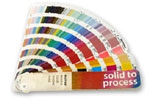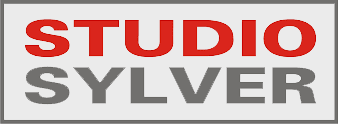| Acrobat Distiler settings The above settings should be uploaded to the Settings directory of the Acrobat Distiller program. |
 |
| Complaint Policy |  |
| Regulations for the provision of internet services |  |
Download
Frequently Asked Questions
Shipment tracking
On the pages of Poczta Polska, you can check at what stage of delivery the parcel with your works is sent. The tracking number provided by us should be entered in the form field in the Shipment tracking panel.

Pantone Matching System® color chart
You don't have the color chart at hand, and you want to see what a given Pantone color looks like? Go to our electronic orientation Pantone Matching System® color chart
What to look for when composing a publication?
Applying the following rules will avoid problems and errors often done by inexperienced pre-workers:
- Postscript files should have all required control elements and markers (stripes, cutting lines, etc.) especially if the work will be saved in a format that does not specify the area of the page,
- when there is a graphic at work that ends flush with edge of the page (so-called bleed graphics), add a 3 mm bleed (edge graphics must lie outside the edge of the page after cutting),
- bitmap resolution should be between 200 dpi and 350 dpi (resolution lower than 200 dpi adversely affects on the quality of printed objects, and over 350 dpi does not improve the quality, it increases the file size unnecessarily),
- do not use RGB colors (if provided work containing RGB colors, the final printout may not be as expected customer),
- if we use black text at work, make sure that the font color is only 100% K , without any CMY components,
- text should not be rasterized (should be saved as text or curves), texts saved as graphics will be printed blurred and jagged,
- for color printing using standard triad (CMYK) do not use a color palette other than CMYK (euroscale) or greyscale - all Pantone® colors should be converted to CMYK ,
- if the work will be printed using Pantone® colors, relevant vector objects should be defined as Pantone® colors, and bitmaps as duotons or tritons. WARNING: some applications cannot generate smooth tonal transitions composed of several Pantone® colors
- For multi-page document (book type, catalog, etc.), subsequent pages of the document should be provided in one file (e.g. PDF) one by one. For more complex documents (e.g. when the cover has an unusual way of broken wings or a thick back) ready contributions must be provided,
- do not paste objects using the Copy-Paste method, but import graphics to work,
- you should avoid special effects such as eye shadows, texture fill, rendered fill, transparency, color mask on bitmaps, etc. In particular, applying multiple effects to one an object may cause unexpected results on the printout - at the moment When printing, these effects must be converted to a form that can be saved in one of the formats supported by the printing device (PostScript, PDF), and then often differences between what you see on the screen and we get it on the printout,
- the entire TIFF document should be single-layer (if the designed work consists of several layers should be combined into one layer), you also need to remove unneeded alpha channels - attached alpha channels may result misinterpretation by RIP.
How to properly prepare works for imagesetting?
We recommend preparing closed files. This files intended for film imagesetting (CTF) should be in separated format or a composite PostScript or PDF file. To generate postscript should use the applications and drivers available above on this page or on our ftp server. In the case of files from applications such Indesign, Illustrator, Page Maker or Qurak, choose the alternative option to print the document by saving it in PostScript in a PS file. This file can then be printed on another device. The PostScript file size is generally larger than the original document because images and fonts are embedded in it.
Open (non-postscript) files prepared in graphics programs require will be processed to PostScript. Processing of open files may result unexpected errors in the content of the publication , which can extend time and introduce additional costs when preparing offset plates.
To avoid problems when printing from PDF files must absolutely be used the following rules:
- fonts should be attached inside the document or texts should be converted to curves,
- works should not contain connected color profiles, because there may be color distortions that may manifest themselves, e.g. emulation of white on elements where the color is declared as white (for both bitmaps and vectors),
- save PDF files not higher than PDF 1.5.
How to upload files for exposure to our ftp server?
To transfer files, you need a program that works with FTP. generally
TotalCommander is used, other programs such as
FlashFtp or CuteFTP. Thanks to them, you can copy files directly to the server.
After the transfer, please contact us by phone to inform
when the transfer is complete. You can also use a web browser
typing: ftp://username:password@sylver.pl.
In case of problems or other questions related to this issue, please contact us
contact with the imagesetter.
 We use cookies to ensure that we give you the best experience on our website. Some may have been set already.
If you continue (close this info window) without changing your settings, we will assume that you are happy to receive all cookies on our website.
We use cookies to ensure that we give you the best experience on our website. Some may have been set already.
If you continue (close this info window) without changing your settings, we will assume that you are happy to receive all cookies on our website. 



